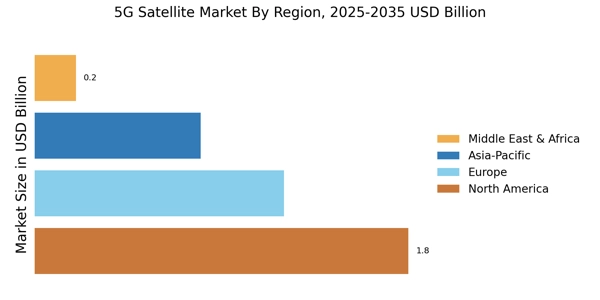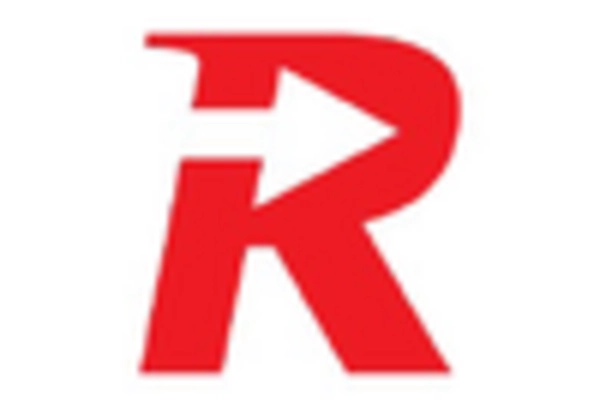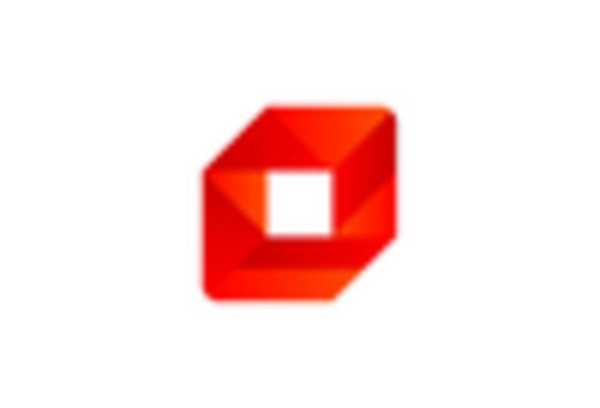Rising Demand for IoT Connectivity
The proliferation of Internet of Things (IoT) devices is significantly influencing the 5G Satellite Market. As industries increasingly adopt IoT solutions for automation, monitoring, and data collection, the need for reliable and widespread connectivity becomes paramount. Satellite technology, particularly when integrated with 5G, offers a viable solution for connecting remote and underserved areas where traditional networks may fall short. The number of connected IoT devices is projected to reach tens of billions in the coming years, creating a substantial market opportunity for satellite service providers. This trend suggests that the 5G Satellite Market will likely see a robust increase in demand as businesses seek to leverage IoT capabilities.
Advancements in Satellite Technology
Technological advancements in satellite systems are propelling the 5G Satellite Market forward. Innovations such as low Earth orbit (LEO) satellites and improved signal processing capabilities are enhancing the performance and reliability of satellite communications. These advancements enable lower latency and higher bandwidth, making satellite solutions more competitive with terrestrial networks. The introduction of LEO constellations, for instance, is expected to revolutionize the way data is transmitted, allowing for faster and more efficient communication. As these technologies continue to evolve, the 5G Satellite Market is likely to benefit from increased adoption and integration of satellite services into various sectors, including telecommunications, transportation, and emergency services.
Regulatory Support and Policy Initiatives
Regulatory support and favorable policy initiatives are crucial for the growth of the 5G Satellite Market. Governments worldwide are increasingly recognizing the importance of satellite communications in enhancing connectivity and supporting economic growth. Initiatives aimed at streamlining licensing processes and promoting competition among satellite operators are likely to foster innovation and investment in the sector. Furthermore, policies that encourage collaboration between satellite and terrestrial networks can enhance service delivery and expand market reach. As regulatory frameworks evolve to support the integration of 5G and satellite technologies, the 5G Satellite Market is expected to benefit from a more conducive environment for growth and development.
Increased Demand for High-Speed Connectivity
The 5G Satellite Market experiences a surge in demand for high-speed connectivity, driven by the proliferation of data-intensive applications. As businesses and consumers increasingly rely on seamless internet access for activities such as streaming, gaming, and remote work, the need for robust satellite solutions becomes apparent. According to recent estimates, the demand for high-speed internet is projected to grow at a compound annual growth rate of over 20% in the coming years. This trend indicates that satellite technology, particularly in conjunction with 5G, is poised to play a crucial role in meeting these connectivity needs. The 5G Satellite Market is thus likely to witness significant investments aimed at enhancing infrastructure and expanding service offerings to cater to this growing demand.
Growing Investment in Satellite Infrastructure
Investment in satellite infrastructure is a key driver for the 5G Satellite Market. Governments and private entities are increasingly recognizing the strategic importance of satellite communications for national security, economic development, and technological advancement. Recent reports indicate that global investments in satellite infrastructure are expected to exceed several billion dollars over the next decade. This influx of capital is likely to facilitate the development of next-generation satellite systems that can support 5G applications. As a result, the 5G Satellite Market is positioned to expand rapidly, with enhanced capabilities and broader service offerings that cater to diverse customer needs.


















Leave a Comment